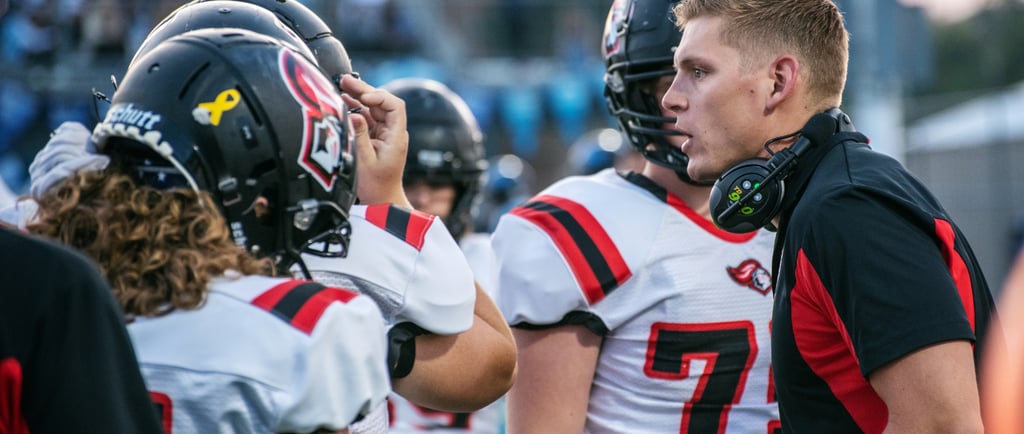How Coaches & Parents Can Give Feedback That Helps, Not Hurts
Struggling players respond best to feedback that’s kind, specific, and actionable. This blog provides coaches and parents with research-based strategies for giving effective feedback—especially to athletes who need encouragement most.
10/9/20254 min read


You’ve got that one or two athletes who work hard, show up early, but still seem stuck—they aren’t improving, getting frustrated, or losing confidence. That’s when feedback becomes your most powerful tool… or your biggest liability. Giving feedback to struggling players is tricky because you’re walking a tightrope between being constructive and being demotivating. Do it well, and those kids grow, feel understood, and start making real strides. Do it poorly, and you risk pushing them away or chipping away at their self-esteem.
Let’s dig into how to deliver feedback that lifts, not limits—especially for athletes who need it most.
Why Feedback Matters (Especially for Struggling Players)
At its best, feedback is the bridge between where an athlete is now and where they want to be. The Frontiers in Sport & Active Living published a 2025 study that showed coach feedback positively influences young players’ sense of mastery, satisfaction, and being “seen” by their coach. When struggling kids receive feedback that’s fair, clear, and caring, it can re-engage them, build trust, and fuel motivation.
On the flip side, overcorrection, vague criticism, or using blame language are common pitfalls. One resource warns: “Coaches who overcorrect or pick apart kids’ technique and criticize their players can undermine kids’ confidence and cause them to perform poorly and lose their enjoyment for the game.” kidssportspsychology.com That’s a real risk when dealing with players already teetering on frustration.
So feedback for struggling athletes isn’t just a “nice to have”—it’s essential. Done well, it can turn a plateau into a breakthrough.
What Makes Feedback Effective (Not Harmful)
Before you speak, knowing how to deliver feedback is just as important as what you say. Here are principles rooted in psychology and coaching literature that help:
Be specific & behavioral. Rather than saying, “You were bad defensively,” point to concrete behavior: “I noticed you drifted too far from your mark in that drill.” Specific feedback is easier to understand and act on.
Use “I” statements, not “You” statements. “You always…” or “You never…” can feel accusatory. Instead: “I noticed you hesitated after the pass; I wonder what’s going through your head then.” This reduces defensiveness.
Tie to things players can control. Feedback should target changable behaviors—footwork, communication, positioning—not personality or attitude.
Be timely, but also choose the right moment. The sooner feedback follows observable behavior, the stronger the learning effect. But if emotions are high (after a heated moment), it’s okay to wait a few minutes to let things settle.
Balance positives and areas for growth. Research suggests a ratio of about 75% positive to 25% corrective feedback helps maintain motivation.
Use models like CEDAR or fast feedback. One framework called CEDAR breaks feedback into Context, Examples, Diagnosis (what’s happening), Actions (what to do differently), and Review. Another approach is FAST feedback—Frequent, Accurate, Specific, and Timely.
Avoid feedback from third parties. Feedback should be from your own observations; citing others’ opinions can dilute impact and credibility.
What Feedback Looks Like in Practice (for the Struggling Child)
Let’s get practical. Here are examples of how to give feedback that helps the athlete feel supported—and able to act.
Scenario: Your basketball player is consistently drifting away from their defensive assignment.
Instead of:
“You always lose your man!”
Try:
“During the last drill, I saw that when the ball swung, you drifted and your defender got open. Let’s practice sliding your feet and checking the ball first so you stay with your man. Want me to walk you through it in the next rep?”
Notice how this version:
References a specific moment
Describes behavior, not personality
Suggests a concrete next step
Offers collaboration
Another scenario: A soccer player hesitates before shooting, even when open.
Instead of:
“Why don’t you ever take the shot?”
Try:
“In that moment you stopped—what were you thinking? Let’s break down that hesitation and practice deciding quickly so next time you shoot with confidence.”
When you invite discussion, you avoid turning feedback into a lecture. You give the athlete agency in the process.
Building a Feedback Culture: Not Just One-Off Moments
If feedback is only for big mistakes, it stops being useful. Great coaches embed feedback into everything. Here’s how:
Regular micro check-ins. Between drills, ask questions: “How did that feel?” “What could you try differently next rep?”
Encourage self‑assessments first. Let the player name one thing they thought they did well, and one thing they want to improve. Then offer your perspective. This aligns with coaching feedback models where individuals self-reflect before external input. Culture at Work
Use video feedback. Especially for technique work, showing kids what they actually did vs. what they thought they did is powerful. Studies show video feedback can safely accelerate learning. PubMed
Normalize “pause and reset.” After a bad play, pause. Re-center. Offer a short cue or breathing moment. Help the athlete shed the momentum of error and reset mentally.
Rotate focus. One day emphasize footwork, another day communication, another day positioning. When you overload feedback in every area at once, struggling athletes feel confused or defensive.
When More Support Is Needed
Even with your best feedback, some players need more scaffolding. Here are additional supports to consider:
One-on-one time. Pull them aside briefly. Focus on a very narrow action (e.g. “Let's work on that corner cut just for five minutes”).
Peer modeling. Let them watch a teammate or upper-level player perform the movement you’re working on, then try it themselves.
Confidence scaffolding. Start with very small, achievable tasks that let them feel success, and gradually escalate difficulty.
Reassurance & check-ins. Sometimes struggling kids just need to know their coach still believes in them. A quick “I’m proud of how hard you’re working” can go a long way.
Why This Will Make You a Better Coach (and Parent)
Paying attention to how you deliver feedback transforms your team’s culture. When athletes feel safe to struggle and know you’re helping—not judging—they take more risks, stay more engaged, and improve more steadily.
And the data supports it: Berntzen’s 2025 study revealed that coach feedback significantly influenced a young player’s well-being, mastery, satisfaction, and motivation. Frontiers When learners feel seen, they feel valued—and they’re more open to growth.
By mastering feedback—especially for those who struggle—you’re not just coaching them for today’s game. You’re teaching them how to learn, how to persist, how to trust their process. That’s coaching legacy.

